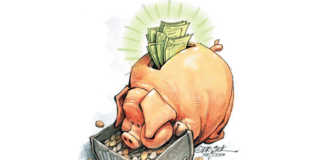Recent years have seen a rise in inconsistent weather patterns, which have had a negative impact on both consumers and businesses globally. Southern Africa has not escaped the effects of these weather patterns, and the region’s agricultural sector has suffered the consequences of unreliable rain patterns, unusually high temperatures and floods.
Direct effect on the economy
These weather patterns have also taken their toll on the local agriculture sector, and subsequently financial losses are increasing, resulting in damaging consequences for the economy, industry and consumers. Statistics SA recently announced that South Africa’s economy contracted by 1,3% in the second quarter of the year, with the agriculture sector contracting by 17,4% quarter-on-quarter. In addition, the UN has warned that the country is facing its worst drought since 1992.

The agricultural industry is not merely an important contributor to South Africa’s GDP; it is crucial to our survival: agriculture literally feeds everyone. Yet the sector faces a greater risk of being affected by natural disasters such as droughts, floods, violent storms and hail than any other economic sector.
The Department of Agriculture Forestry and Fisheries’s (DAFF) Crop Estimates Committee reported recently that the estimated yield for the current maize harvest, a staple food source for millions, is the lowest since 2007. Coupled with this projected shortage, prolonged dry spells have also reduced grazing for livestock.
Major financial losses
Natural disasters have the potential to cause extensive financial losses for both farmers and the economy. Not only will farmers generate no income if crops fail, but replanting crops involves a significant expense. The level of financial loss varies from one agricultural subsector to the next. Crops such as wheat and maize, once reinstated, are able to yield a harvest the following year, while others, such as vineyards, may require two to three years before they can produce a harvest.
These disasters can have a ripple effect on the economy. Just one aspect is the loss of exports, which can have serious knock-on effects. Unemployment is another factor to be considered. If a farmer cannot recover from the loss suffered during a natural disaster, he or she may be forced to cease production, leaving farm workers without a job.
Expensive risk insurance
To ensure sustainable food production, the industry needs to assess all the factors involved in production. An important aspect is mitigating risk within the agricultural environment. Currently, the insurance market offers a large range of products to cover assets and crops, while government offers cover for strike-related incidents through the South African Special Risk Insurance Association (Sasria).
According to Agri SA, crop production and livestock farming is expected to decrease 30% this year, which could cost farmers at least R10 billion. As a result, many farmers are concerned about the sustainability of the industry. Most assets in the agricultural industry can be insured and funded as part of an operation’s expenses, not unlike other kinds of businesses. Crop insurance, however, is particularly expensive and has various limitations on the type of crops that can be insured and the kind of risks faced.
With asset insurance, clients have the option of paying monthly or annual premiums. By contrast, crop insurance, is paid upfront for a particular harvesting season, and the insurance window applies only to these dates. Many farmers cannot afford to take out this kind of insurance and therefore become susceptible to potentially devastating disasters.
In addition, only a limited number of insurance companies in South Africa offer this kind of insurance. While there is limited government funding available to farmers to provide relief for disasters of this nature, I believe there is a need for government and industry players to work together to find a viable, sustainable solution to mitigate the risks associated with natural disasters affecting the sector.
The viability of a special fund to assist farmers in this regard should also be investigated. Insufficient insurance cover can result in foreclosure, and we need to ensure that the sector is adequately protected when disaster strikes.
Advice on mitigating risk
To mitigate risk, follow these guidelines:
- Investigate which government funds are applicable to your businesses so that you can receive compensation when a natural disaster occurs;
- Consult a broker or insurance company representative who is knowledgeable about your particular subsector;
- Conduct research to ensure a thorough understanding of all insurance products available. Identify which companies offer policies that are appropriate for your farming business;
- Establish the exact capital outlay necessary to comprehensively protect your business.
Once you have completed this evaluation and familiarised yourself with the different options, decide what is affordable and what are your most important insurance needs. A risk that can potentially cause the complete loss of your business would require urgent cover.
Visit www.rbs.co.za for further information.













